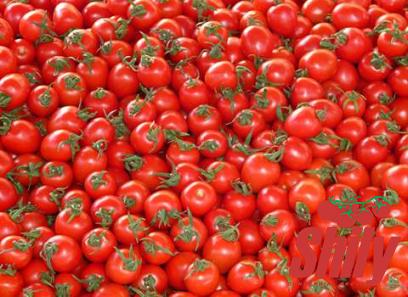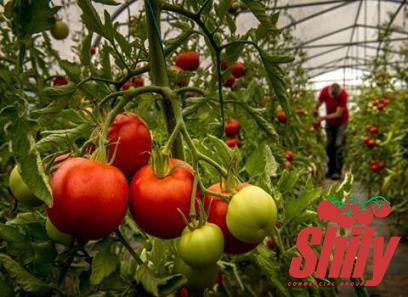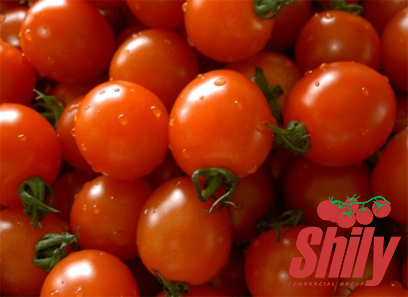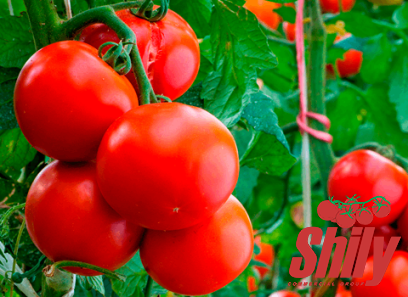Tomato paste is a staple ingredient in many kitchens around the world, adding depth, richness, and that unmistakable tomato flavor to a wide variety of dishes. While store-bought tomato paste is convenient, nothing quite compares to the taste and freshness of homemade tomato paste. In this comprehensive guide, we will take you through the easy steps of making your own tomato paste at home, ensuring that you can enjoy the vibrant taste of summer tomatoes all year round. Benefits of Homemade Tomato Paste: Before we delve into the process of making homemade tomato paste, let’s first discuss some of the benefits of creating your own.

.
 One of the main advantages of making tomato paste at home is the control you have over the ingredients. By using fresh, ripe tomatoes and quality spices, you can ensure that your tomato paste is free from preservatives, additives, and other unwanted chemicals. Additionally, homemade tomato paste allows you to customize the flavor to suit your taste preferences, whether you prefer a more robust, spicy, or aromatic profile. Choosing the Right Tomatoes: The first step in making homemade tomato paste is selecting the right tomatoes. While any type of tomato can be used, Roma tomatoes are commonly preferred for their meaty texture and low moisture content, which makes them ideal for creating a thick paste. Look for ripe, high-quality tomatoes that are firm to touch and have a deep red color.
One of the main advantages of making tomato paste at home is the control you have over the ingredients. By using fresh, ripe tomatoes and quality spices, you can ensure that your tomato paste is free from preservatives, additives, and other unwanted chemicals. Additionally, homemade tomato paste allows you to customize the flavor to suit your taste preferences, whether you prefer a more robust, spicy, or aromatic profile. Choosing the Right Tomatoes: The first step in making homemade tomato paste is selecting the right tomatoes. While any type of tomato can be used, Roma tomatoes are commonly preferred for their meaty texture and low moisture content, which makes them ideal for creating a thick paste. Look for ripe, high-quality tomatoes that are firm to touch and have a deep red color.
..
 Avoid using overripe or bruised tomatoes, as they can affect the taste and consistency of the final product. Preparing the Tomatoes: Once you have chosen your tomatoes, it’s time to prepare them for the paste-making process. Start by washing the tomatoes thoroughly to remove any dirt or pesticides. If desired, you can peel the tomatoes by blanching them in boiling water for a few seconds and then transferring them to an ice water bath to loosen the skins. Alternatively, you can leave the skins on for a more rustic texture. Cooking the Tomatoes: To begin the cooking process, quarter the tomatoes and remove the seeds and excess pulp, as these can add unwanted moisture to the paste. Place the prepared tomatoes in a large saucepan or pot and simmer over low heat, stirring occasionally to prevent sticking. You can also add aromatics such as garlic, onions, herbs, and spices to enhance the flavor of the tomato paste. Simmer the tomatoes until they break down and reduce to a thick, concentrated consistency.
Avoid using overripe or bruised tomatoes, as they can affect the taste and consistency of the final product. Preparing the Tomatoes: Once you have chosen your tomatoes, it’s time to prepare them for the paste-making process. Start by washing the tomatoes thoroughly to remove any dirt or pesticides. If desired, you can peel the tomatoes by blanching them in boiling water for a few seconds and then transferring them to an ice water bath to loosen the skins. Alternatively, you can leave the skins on for a more rustic texture. Cooking the Tomatoes: To begin the cooking process, quarter the tomatoes and remove the seeds and excess pulp, as these can add unwanted moisture to the paste. Place the prepared tomatoes in a large saucepan or pot and simmer over low heat, stirring occasionally to prevent sticking. You can also add aromatics such as garlic, onions, herbs, and spices to enhance the flavor of the tomato paste. Simmer the tomatoes until they break down and reduce to a thick, concentrated consistency.
…
 Straining the Mixture: Once the tomatoes have cooked down and developed a rich flavor, it’s time to strain the mixture to remove any remaining seeds, skins, and larger pieces of pulp. This can be done by passing the cooked tomatoes through a fine-mesh sieve or using a food mill to achieve a smooth, velvety texture. Be sure to press the mixture through the sieve to extract as much liquid and pulp as possible, leaving behind a silky tomato paste. Seasoning and Storing: After straining the tomato mixture, taste the paste and adjust the seasoning as needed with salt, sugar, vinegar, or other flavorings to balance the flavors. At this stage, you can also add a drizzle of olive oil for richness and depth. Once seasoned to your liking, transfer the tomato paste to sterilized jars or containers, ensuring that there is a thin layer of oil on top to help preserve the paste. Store the tomato paste in the refrigerator for up to two weeks or freeze it for longer storage.
Straining the Mixture: Once the tomatoes have cooked down and developed a rich flavor, it’s time to strain the mixture to remove any remaining seeds, skins, and larger pieces of pulp. This can be done by passing the cooked tomatoes through a fine-mesh sieve or using a food mill to achieve a smooth, velvety texture. Be sure to press the mixture through the sieve to extract as much liquid and pulp as possible, leaving behind a silky tomato paste. Seasoning and Storing: After straining the tomato mixture, taste the paste and adjust the seasoning as needed with salt, sugar, vinegar, or other flavorings to balance the flavors. At this stage, you can also add a drizzle of olive oil for richness and depth. Once seasoned to your liking, transfer the tomato paste to sterilized jars or containers, ensuring that there is a thin layer of oil on top to help preserve the paste. Store the tomato paste in the refrigerator for up to two weeks or freeze it for longer storage.










Your comment submitted.